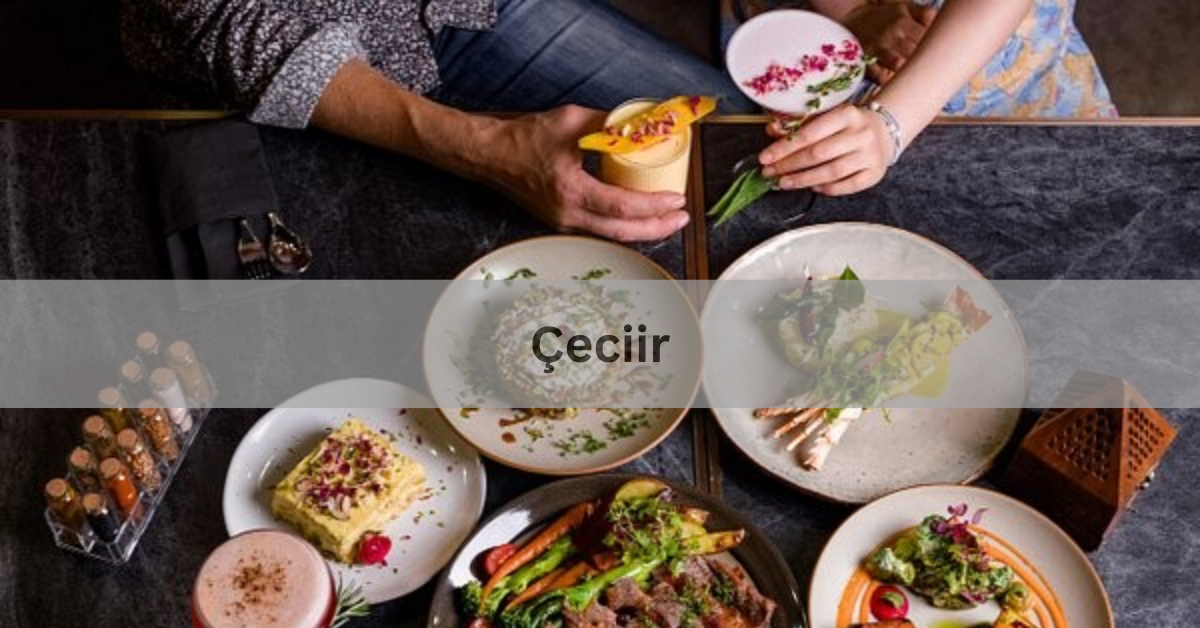
Enter the enthralling realm of çeciir, where culinary talent flourishes among a blend of tradition and innovation. Delving into the essence of Turkish cuisine through this long-standing legume is like plunging into a sea of traditions brimming with both modern inspiration and quaint old charm. It’s hard not to be blown away by the experience. Chickpeas, called çeciir in Turkey, are a humble ingredient with a rich history that spans centuries, inviting you to explore its many facets through the lens of Turkish cuisine and beyond.
Contents
- 1 The Historical Significance of Çeciir
- 2 Çeciir in Turkish Cuisine
- 3 The Health Benefits of Çeciir
- 4 Çeciir and Social Cohesion
- 5 The Role of Çeciir in Modern Culinary Innovation
- 6 Çeciir’s Role in Sustainable Agriculture
- 7 Çeciir in Global Cuisine
- 8 The Economic Impact of Çeciir Cultivation
- 9 The Impact of Çeciir on Food Security
- 10 Çeciir and Culinary Tradition Preservation
- 11 The Science Behind Çeciir’s Nutritional Benefits
- 12 Çeciir in Culinary Education and Innovation
- 13 Conclusion: The Enduring Legacy of Çeciir
The Historical Significance of Çeciir
Çeciir is not just a staple of Turkish cuisine but a symbol of a long history of expertise. The history of çeciir dates back thousands of years, with evidence suggesting its cultivation in ancient civilizations. This legume has traveled through time, adapting and evolving while maintaining its core significance in various cultures. From ancient times to the present day, çeciir has been an integral part of the diet in Turkey and beyond, showcasing its enduring appeal.
Çeciir in Turkish Cuisine
In Turkish cuisine, çeciir stands out as a key ingredient in many traditional dishes. It plays a vital role in recipes such as hummus, a creamy spread that has gained international fame, and in hearty stews like çeciir stew, which is a beloved comfort food. The versatility of çeciir makes it an indispensable part of the Turkish culinary landscape, celebrated for its ability to complement a wide range of flavors and ingredients.
Popular Turkish Dishes Featuring Çeciir
- Hummus: This popular dip made from çeciir is enjoyed worldwide. Its smooth texture and rich flavor make it a favorite in both casual and formal settings.
- Çeciir Stew: A hearty dish where çeciir is simmered with vegetables and spices, providing a nutritious and filling meal.
- Çeciir Salad: A refreshing salad featuring çeciir, fresh vegetables, and a tangy dressing, perfect for a light yet satisfying meal.
The Health Benefits of Çeciir
Çeciir is not just a flavorful ingredient but also a star that promotes health. Rich in protein, fiber, and essential nutrients, çeciir offers numerous health benefits. It supports digestive health, helps in weight management, and provides sustained energy. Incorporating çeciir into your diet can contribute to overall well-being and nutritional balance.
Nutritional Profile of Çeciir
- Protein: Çeciir is a great source of plant-based protein, making it an excellent option for vegetarians and vegans.
- Fiber: High in dietary fiber, çeciir aids in digestion and helps maintain a healthy gut.
- Vitamins and Minerals: Çeciir provides essential vitamins and minerals, including folate, iron, and magnesium.
Çeciir and Social Cohesion
In addition to its culinary and health benefits, çeciir holds a special place in socially cohesive celebrations. In Turkey, çeciir is often featured in festive meals and communal gatherings, symbolizing unity and tradition. The preparation and sharing of çeciir dishes often bring people together, reinforcing social bonds and cultural heritage.
Celebratory Dishes with Çeciir
- Festive Hummus: Often served during special occasions, this dish showcases the importance of çeciir in festive celebrations.
- Community Stews: Large pots of çeciir stew are commonly prepared for community events and celebrations, highlighting the role of çeciir in fostering social connections.
The Role of Çeciir in Modern Culinary Innovation
In contemporary kitchens, çeciir has become a canvas for culinary innovation. Chefs and home cooks alike are experimenting with çeciir to create new and exciting dishes that blend traditional flavors with modern techniques. For example, çeciir is now being used in innovative ways, such as in gluten-free flour blends, vegan burgers, and even desserts. This creative use of çeciir not only highlights its versatility but also demonstrates its adaptability to modern dietary trends and preferences. By incorporating çeciir into these contemporary recipes, chefs are reviving this ancient ingredient while making it relevant for today’s health-conscious and adventurous food lovers.
Çeciir’s Role in Sustainable Agriculture
Çeciir also plays a significant role in sustainable agriculture. As a legume, çeciir has the unique ability to fix nitrogen in the soil, which improves soil fertility and reduces the need for synthetic fertilizers. This natural process contributes to more sustainable farming practices by enhancing soil health and promoting biodiversity. Additionally, çeciir is known for its relatively low water and resource requirements compared to other crops, making it a more environmentally friendly choice. The cultivation of çeciir supports sustainable agricultural practices and helps mitigate some of the environmental impacts associated with conventional farming methods.
Çeciir in Global Cuisine
While çeciir is a staple of Turkish cuisine, its influence extends far beyond the borders of Turkey. Globally, çeciir has made its mark on various culinary traditions. In the Middle East, çeciir is used in dishes like falafel and tabbouleh, reflecting its integration into a variety of regional cuisines. In Indian cuisine, çeciir is a key ingredient in dishes such as chana masala and dal, showcasing its versatility across different culinary contexts. The global popularity of çeciir underscores its universal appeal and highlights how this humble legume has become an integral part of diverse culinary cultures around the world.
The Economic Impact of Çeciir Cultivation
The cultivation and trade of çeciir also have a significant economic impact. In Turkey and other major çeciir-producing countries, the farming and processing of çeciir contribute to local economies by providing employment and supporting rural livelihoods. The export of çeciir and çeciir-based products to international markets also generates revenue and fosters economic growth. Additionally, the demand for çeciir-based products has led to the development of value-added products, such as packaged hummus and çeciir flour, which further contribute to economic activity. By supporting çeciir cultivation, communities benefit economically while preserving a traditional crop that continues to play a crucial role in both local and global markets.
The Impact of Çeciir on Food Security
Çeciir plays a vital role in enhancing food security, particularly in regions where it is a staple crop. As a nutrient-dense legume, çeciir provides a valuable source of protein, fiber, and essential vitamins and minerals, which are crucial for combating malnutrition and food insecurity. Its ability to thrive in diverse environmental conditions and its relatively low cost of cultivation make çeciir a reliable food source for many communities. By incorporating çeciir into national and international food aid programs, organizations can address nutritional deficiencies and support sustainable food systems, helping to ensure that populations have access to essential nutrients.
Çeciir and Culinary Tradition Preservation
The cultivation and consumption of çeciir are deeply intertwined with the preservation of culinary traditions. Traditional recipes and cooking methods that feature çeciir are passed down through generations, preserving cultural heritage and culinary knowledge. Festivals and community events that celebrate çeciir dishes help maintain these traditions and foster a sense of cultural identity. By highlighting the role of çeciir in these practices, we can better understand how traditional foods contribute to cultural continuity and the transmission of culinary arts from one generation to the next.
The Science Behind Çeciir’s Nutritional Benefits
The nutritional benefits of çeciir are supported by scientific research that highlights its health-promoting properties. Studies have shown that çeciir is rich in antioxidants, which help protect cells from oxidative stress and reduce the risk of chronic diseases. Additionally, the high fiber content of çeciir aids in regulating blood sugar levels and improving digestive health. Research into the specific compounds found in çeciir, such as saponins and flavonoids, continues to reveal its potential benefits for heart health and cancer prevention. Understanding the science behind these benefits enhances our appreciation of çeciir as a valuable component of a healthy diet.
Çeciir in Culinary Education and Innovation
Çeciir is also making its mark in culinary education and innovation. Culinary schools and institutions are increasingly incorporating çeciir into their curricula, teaching students about its uses, preparation techniques, and cultural significance. This focus on çeciir helps aspiring chefs and food professionals appreciate its versatility and potential in modern cuisine. Additionally, culinary competitions and innovation labs often feature çeciir as a key ingredient, encouraging chefs to experiment with new recipes and presentation styles. By fostering creativity and knowledge around çeciir, these educational and innovative efforts contribute to the evolving landscape of global cuisine.
Conclusion: The Enduring Legacy of Çeciir
As we explore the fascinating world of çeciir, it becomes clear that this legume is much more than a simple ingredient. With its rich history, diverse culinary uses, health benefits, and role in social traditions, çeciir represents a significant part of Turkish culture and cuisine. Embracing çeciir is like taking a journey through time, celebrating a legacy that continues to thrive in both traditional and modern contexts. Whether enjoyed in a classic dish or a contemporary creation, çeciir remains a beloved symbol of culinary excellence and cultural heritage.






